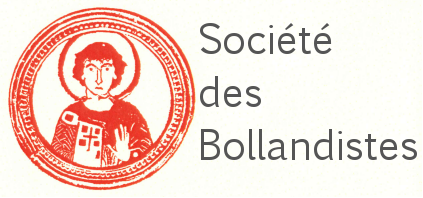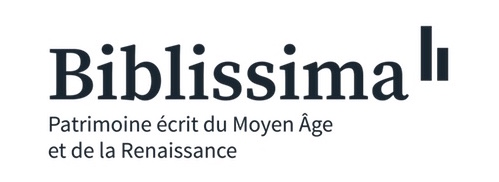|
Alcalay, 2008, Le "Parisinus graecus" 135 : un hommage à Jean Cantacuzène? Etude historique d'un livre de Job du XIVe siècle |
|
|
408 n. 13 et 14, 413 n. 30 et 32, 431 n. 93, 434.... |
|
Anderson, 2022, The Creation of the Illustrated Octateuch |
|
|
|
|
Augustin, 2019, Le sixième Discours sur Lazare attribué à Jean Chrysostome : la question de l'authenticité |
|
|
2 (n. 3) |
|
Bernabò, 2003, Cinquantaquattro dipinti romani della prima metà del IX secolo inediti o poco noti. Prima l’iconografia, poi lo stile |
Planches |
|
|
|
Cherubini, 2012, Sit liber gratus quem servulus est operatus. Studi in onore di Alessandro Pratesi per il suo 90° compleanno |
|
|
|
|
Choulis, 2013, Conservation treatments on the Greek Manuscripts of the Fondo antico in the Vatican Library under Paul V (1605-1621) |
|
|
|
|
Devoge, 2009, Quand Job tombe malade. Étude littéraire et iconographique d’une scène biblique d’après la Septante |
|
|
|
|
Dobrynina, 2018, Colophons and Running Titles. On New Terminology in Describing Greek Manuscripts of the Ninth-Tenth Centuries |
|
|
|
|
Gasbarri, 2010, Cristo al tempio, Lazzaro, la formica-leone. Osservazioni iconografiche su alcune miniature dell’Athen. Gr. 211 |
|
|
23 et n. 37 ; 30, n. 39 ; fig. 8 |
|
Gasbarri, 2012, Immagini eloquenti. Nuove osservazioni sul codice Athen. gr. 211 con le Omelie di Giovanni Crisostomo |
|
|
306, n. 27 |
|
Goeke-Mayr and Makris, 2020, Dating the codex Patmiacus 171: Iconoclastic remarks on the Byzantine illuminated manuscripts of the Book of Job and on the supposed origins of the Catenas in the 6th century |
|
|
439 |
|
Irigoin, 1966, Structure et évolution des écritures livresques de l'époque byzantine |
|
|
257 n. 4 |
|
Manfredi and Potenza, 2022, I codici greci di Niccolò V. Edizione dell’inventario del 1455 e identificazione dei manoscritti. Con approfondimenti sulle vicende iniziali del fondo Vaticano greco della Biblioteca Apostolica Vaticana |
|
|
|
|
Matera, 2024, Le palimpseste <i>Parisinus graecus</i> 1330, le plus ancien témoin manuscrit du <i>Corpus Dionysiacum</i> . Notes paléographiques et codicologiques |
|
|
77 |
|
Orsini, 2016, La maiuscola ogivale inclinata. Contributo preliminare |
|
|
113 |
|
Osborne, 2023, Rome in the Ninth Century: A History in Art |
|
|
188-193 |
|
Serventi, 2020, Sull'Ambr E 49-50 inf. (Gregorio di Nazianzo) |
|
|
586 |
|
Weitzmann, 1935, Die byzantinische Buchmalerei des 9. und 10. Jahrhunderts |
|
|
49, 51, 77, 80, 81 |
| 0107k |
Bernabò, 2004, Le miniature per i manoscritti greci del Libro di Giobbe: Patmo, Monastero di San Giovanni Evangelista, cod. 171; Roma, Biblioteca Apostolica Vaticana, cod. Vat. gr. 749; Sinai, Monastero di Santa Caterina, cod. 3; Venezia, Biblioteca Nazionale Marciana, cod. gr. 538 |
|
|
|
| 0107m |
Papadaki-Oekland, 2009, Byzantine illuminated manuscripts of the book of Job : a preliminary study of the miniature illustrations its origin and development |
|
|
323-330 |
| 0146va |
D'Agostino, 2013, Furono prodotti manoscritti greci a Roma tra i secoli VIII e IX? Una verifica codicologica e paleografica |
Description p. 52 |
|
passim |
| 0287q |
Dobrynina, 2013, Сводный каталог греческих иллюминированных рукописей в российских хранилищах. Т. 1, Рукописи IX-X вв. в Государственном историческом музее, ч. 1 |
Système décoratif de transition |
|
22 (n. 46) |
| 1004e |
Bernabò, 2011, Voci dell'Oriente. Miniature e testi classici da Bisanzio alla Biblioteca Medicea Laurenziana |
|
|
|
| 1378t |
Weitzmann, 1996, Die byzantinische Buchmalerei des 9. und 10. Jahrhunderts: Addenda und Appendix |
|
|
50, 64, 65, 98 |







